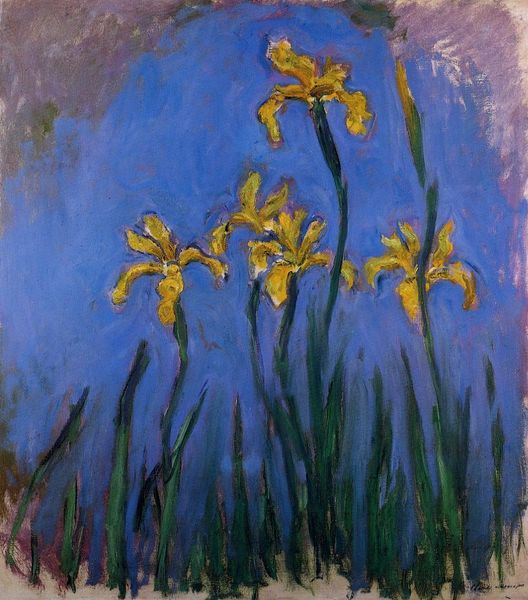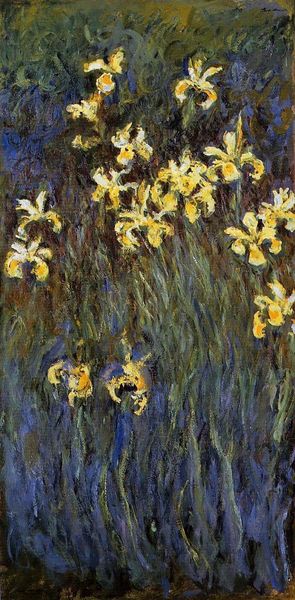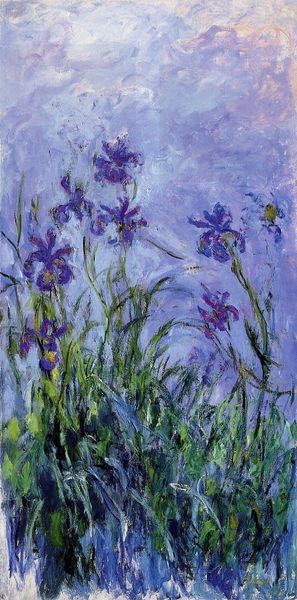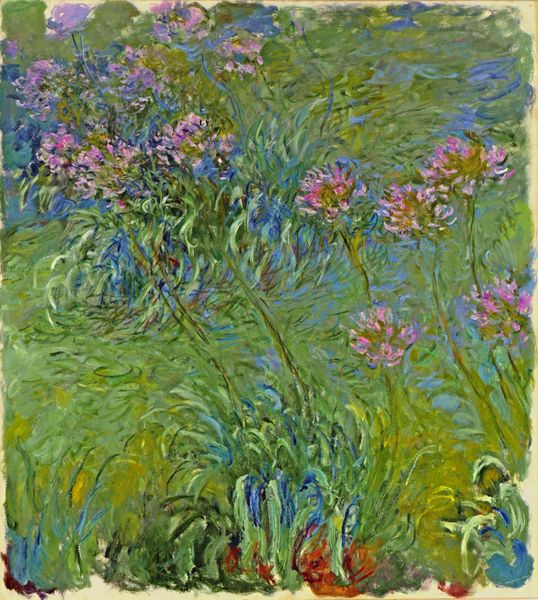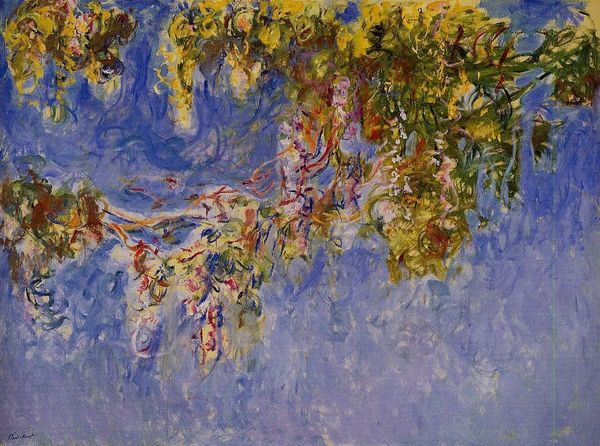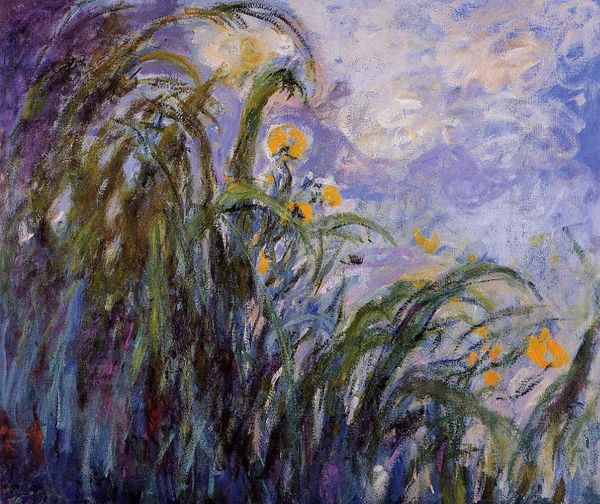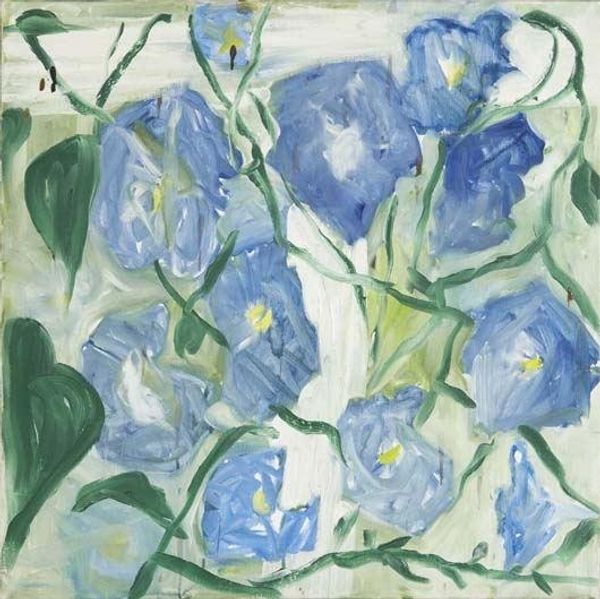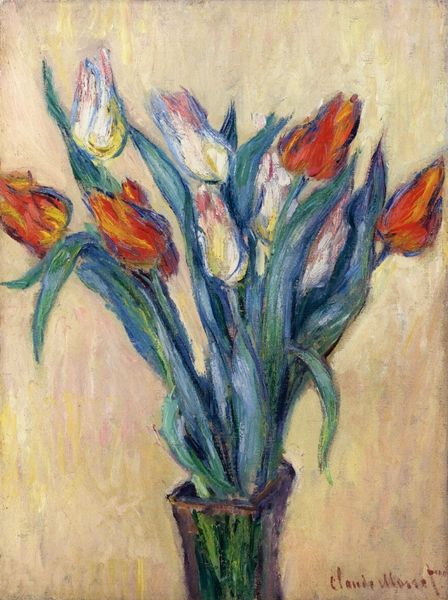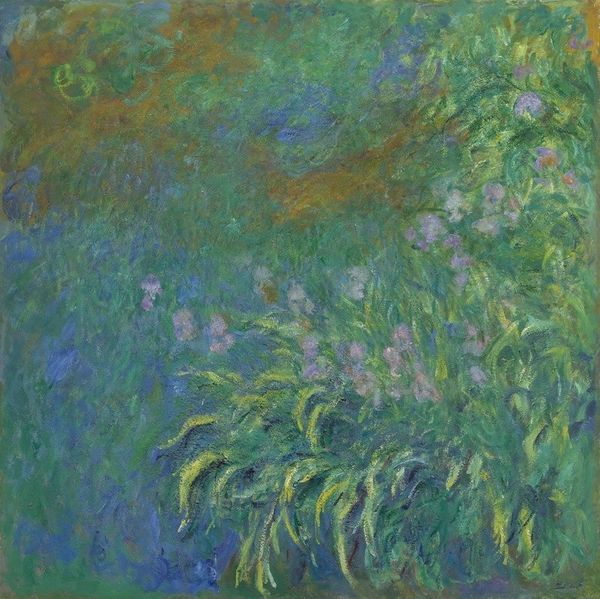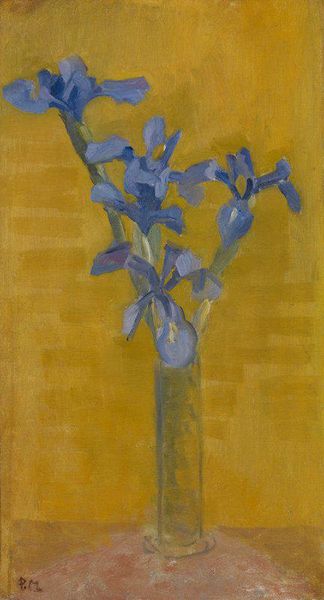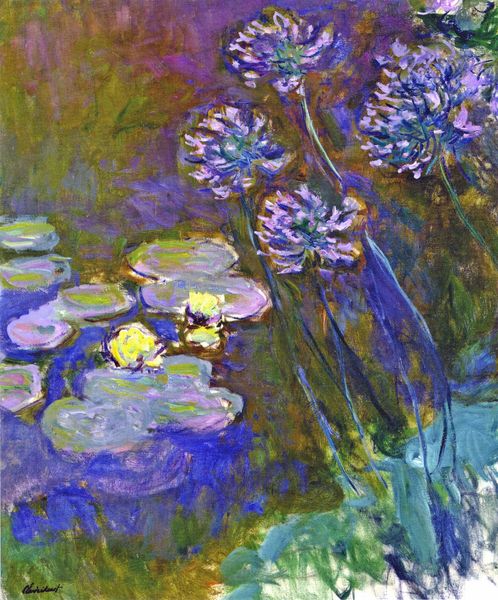
Copyright: Public domain
Editor: We're looking at Claude Monet's "Yellow Irises with Pink Cloud," painted in 1917. The strong colors give the work an almost dreamlike quality. What can you tell us about it? Curator: Considering the socio-political climate of 1917, towards the end of the First World War, the painting speaks volumes. The vibrant irises against an ethereal sky feel like a deliberate act of resistance against the despair of war. What does nature represent in a time of global conflict? Does it provide solace, escape, or perhaps a symbol of resilience? Editor: So, the flowers are more than just flowers; they're a statement? Curator: Absolutely. Monet was deeply affected by the war. He channels a kind of radical hope, suggesting that even amidst destruction, beauty and life persist. This idea echoes feminist philosophies that champion care and creation in the face of patriarchal violence. Do you see any visual cues that reinforce this reading? Perhaps in the way Monet uses color? Editor: The bright yellow irises definitely stand out against the muted blues and pinks. They command attention. Curator: Exactly. The color contrast serves to amplify the life-affirming qualities of the natural world, creating a visual counterpoint to the violence of the time. By positioning his work within a contemporary sociopolitical narrative, Monet challenges us to contemplate themes of pacifism and ecological awareness, thereby extending the historical narrative beyond mere dates and techniques. Editor: I see it now; this isn't just a landscape painting. It's a visual manifesto! I didn’t expect that interpretation. Curator: It’s a powerful testament to art’s capacity to engage in complex conversations about identity, resilience, and the world around us. Hopefully it helps us engage with how his later work is positioned.
Comments
No comments
Be the first to comment and join the conversation on the ultimate creative platform.
